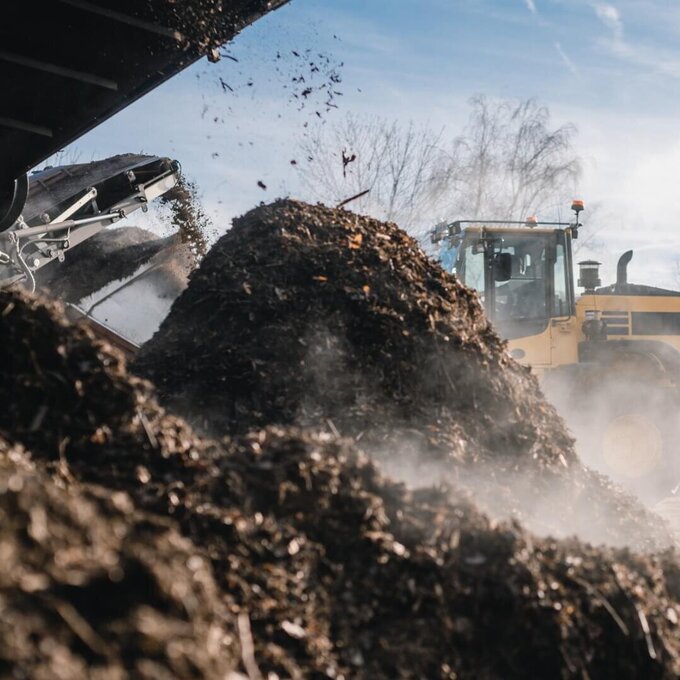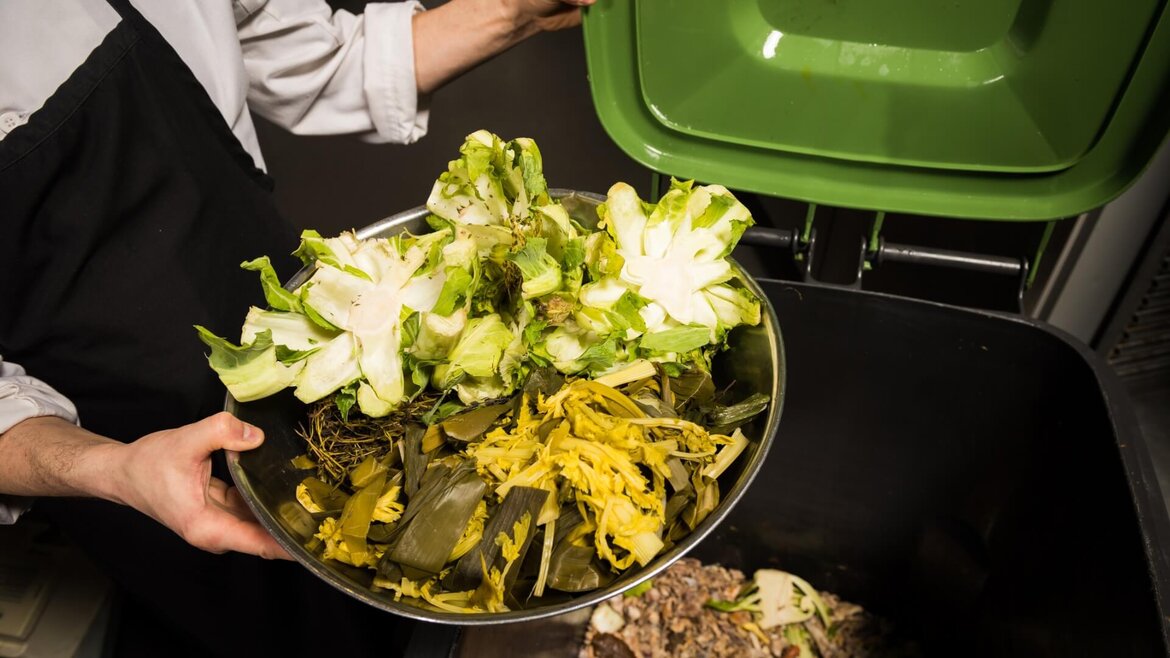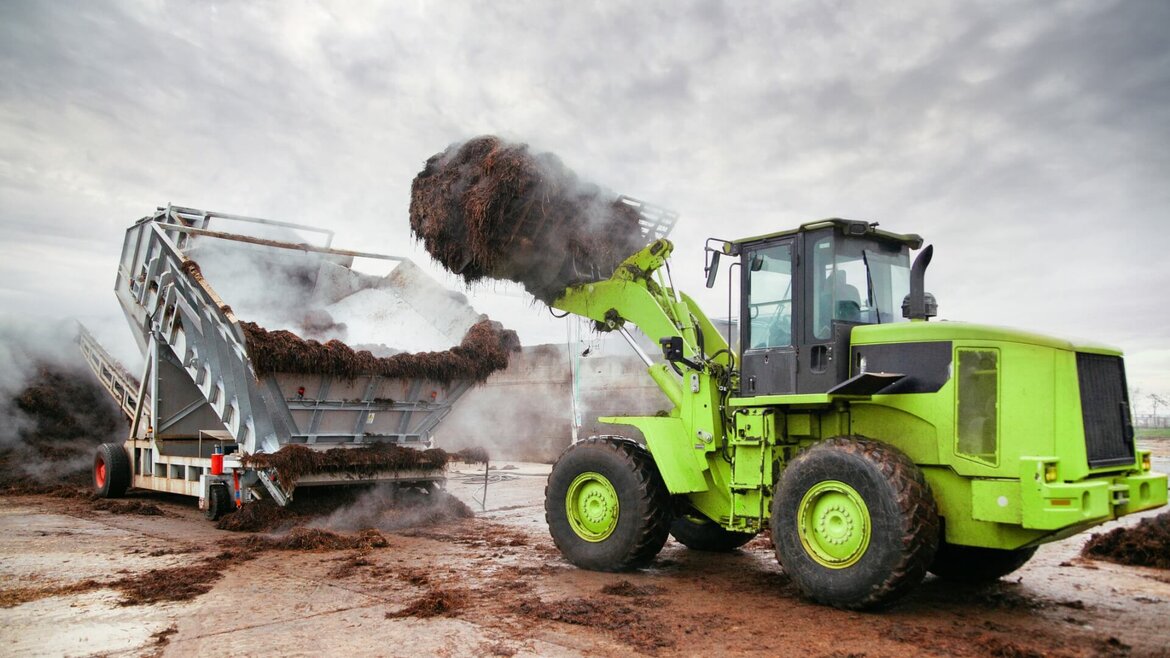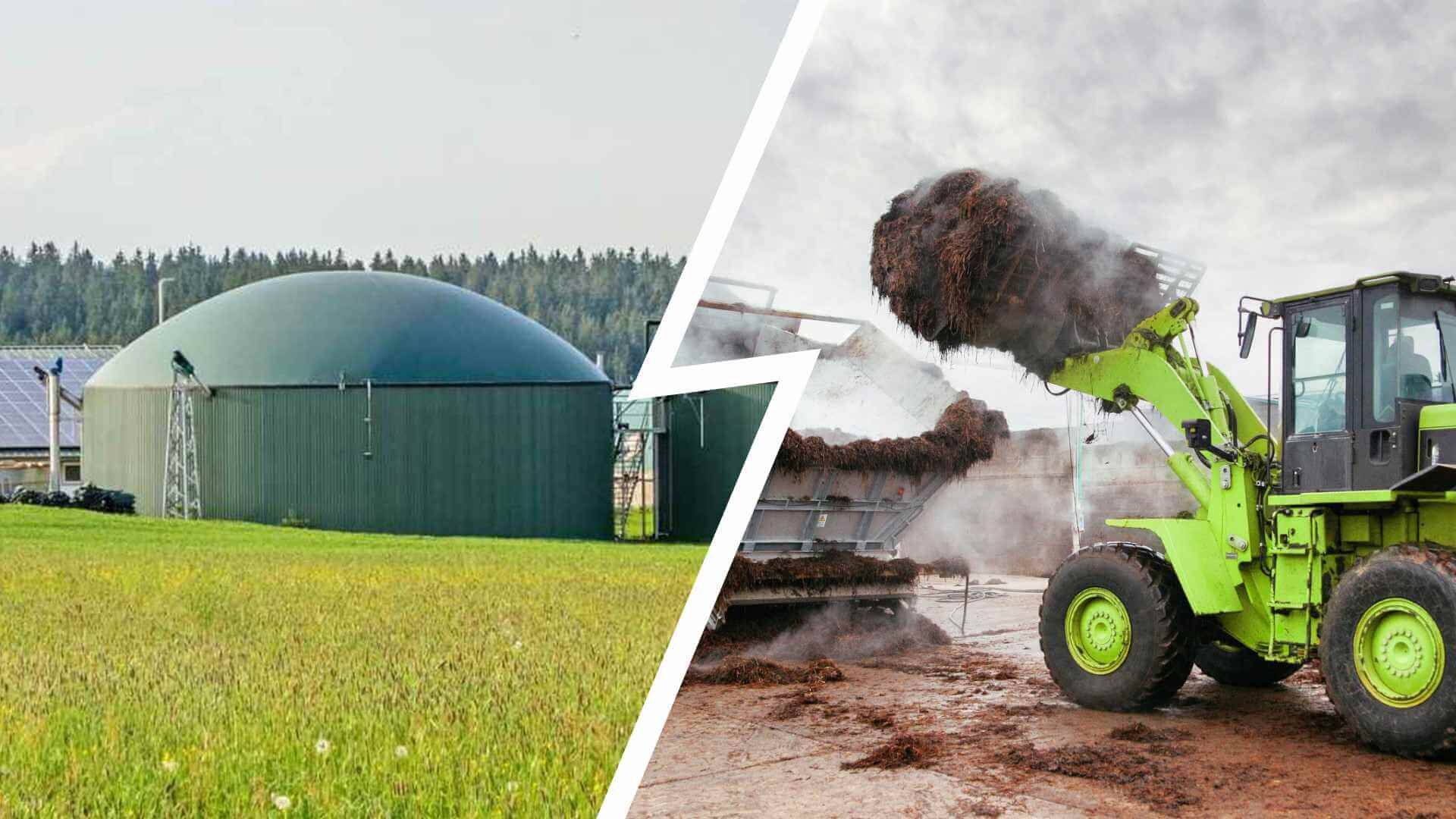Anaerobic digestion

Anaerobic digestion is a process in which organic material is broken down by microorganisms in the absence of oxygen (anaerobic). Its two main products are biogas and biofertiliser.
Composting

Composting is a process in which organic materials are broken down into compost by microorganisms in the presence of oxygen (aerobic).
WHICH IS BETTER: DIGESTING FOOD WASTE IN BIOGAS PLANTS, OR COMPOSTING IT?
Kitchen scraps and food waste are valuable materials with a high energy content – higher than that of waste from the bio-bin, which typically contains garden waste and even bioplastic bags in addition to kitchen waste.

Waste with a high organic content – including kitchen scraps and food waste – can be converted into biomethane in biogas plants. Biomethane, also known as renewable natural gas, can be used as an energy source in the energy mix. Unlike nuclear power, coal and natural gas (which is also methane, but from a non-renewable fossil source), biomethane is an important source of clean energy. The challenging situation in today's energy market has made this fact clearer than ever.

IS COMPOSTING FOOD WASTE STILL AN APPROPRIATE METHOD IN TODAY'S WORLD?
The biological treatment of kitchen and food waste in composting plants is no longer considered state of the art. Why is this?
This form of aerobic treatment – i.e. decomposition in the presence of oxygen – does not produce gases that can be used as a source of energy. And depending on the composition and treatment of the organic materials, this process may cause gases responsible for global warming (greenhouse gases) to escape into the atmosphere and cause environmental harm. Such emissions from composting can be caused by too many greens, too much water or too little oxygen.
What's more, the process of collecting and treating kitchen scraps and food waste in composting plants can lead to very significant odour problems.

BIOGAS PLANTS BOOST SAFETY AND HYGIENE
Fewer unpleasant odours, fewer harmful emissions
Anaerobic digestion in biogas plants is accomplished in a closed system – in the absence of oxygen. In his general medical expert opinion on the biological treatment and decomposition of kitchen and food waste, Dr. Manfred Maier draws the following conclusions: "The various phases of aerobic composting in non-sealed systems cause significant odour problems for employees and neighbours while also producing a number of emissions that are potentially harmful to human, animal and environmental health."
What this means is […] that the biological decomposition of kitchen and food waste in composting plants is no longer considered state of the art, since this aerobic process does not yield gases that can be used as a source of energy.
Dr. Michael Mayr, sworn and court-certified expert
Fewer heavy metals
In addition, studies in Austria have shown that compost produced in accordance with the Austrian Compost Ordinance exhibits a higher concentration of heavy metals than digestate from biogas plants. This digestate is spread on fields as a natural fertiliser. Organic materials that make the journey from plate to storage tank to biogas plant (closed system) contain far fewer contaminants than organic waste that is treated in a composting plant (open system).

Dr. Michael Mayr, sworn and court-certified expert
Boosting the potential of sustainable bioenergy
Most biogas plants are theoretically capable of increasing gas, electricity and heat production in the short term – by an average of 20 percent. Implementing such a step would require regulatory changes or interventions. Kitchen and food waste will continue to be generated by caterers, canteens, hotels and restaurants whatever happens, so this step would make the most of its energy potential.
Although kitchen scraps and food waste can theoretically be used both in composting and in anaerobic digestion, there is no doubt that channelling such waste into anaerobic digestion in biogas plants is the best option for reasons of health and hygiene, including the need to prevent risk or harm to humans, animals and the environment, and the goal of making the recycling process more efficient.
Professor Manfred Maier, former head of the Center for Public Health at the Medical University of Vienna
UK ENERGY PRODUCED FROM ANAEROBIC DIGESTION
Data from the Department for Business, Energy and Industrial Strategy (BEIS) in the Digest of UK Energy Statistics (DUKES) publication show the use of AD in the UK for energy, with the figures representing the energy content of the fuel used. These figures cover both electricity and heat produced from anaerobic digestion of crops and non-water waste feedstocks, in tonnes of oil equivalent (Figure 3.1). While this dataset does not separate energy contributions from crop and waste feedstocks, it can be used to indicate general trends in the use of anaerobic digestion.
| Type | AD for Heat | AD for electricity |
|---|---|---|
| 2015 | 119 | 487 |
| 2016 | 53 | 708 |
| 2017 | 62 | 863 |
| 2018 | 65 | 918 |
| 2019 | 68 | 947 |
| 2020 | 68 | 953 |
Source: Digest of UK Energy Statistics
In 2020, total energy produced from anaerobic digestion was 1,021 thousand tonnes of oil equivalent, which was almost equal to the amount in 2019 at 1,015 thousand tonnes. Energy production from AD followed a rapidly growing trend from 2009-2016, a result of rapidly expanding capacity for AD in the UK over this time. This was supported in part by schemes such as the Renewables Obligation (RO), which was a major support mechanism for large-scale renewables projects. Following RO closure to new generating capacity in March 2017 growth slowed and continued this trend up to 2020.
Source gov.uk

FOOD WASTE IS TURNING GREEN AT THOMAS’S SCHOOL
Food waste is now prevented from going to landfill or the drains and is being collected for conversion into biogas and fertilizer.

